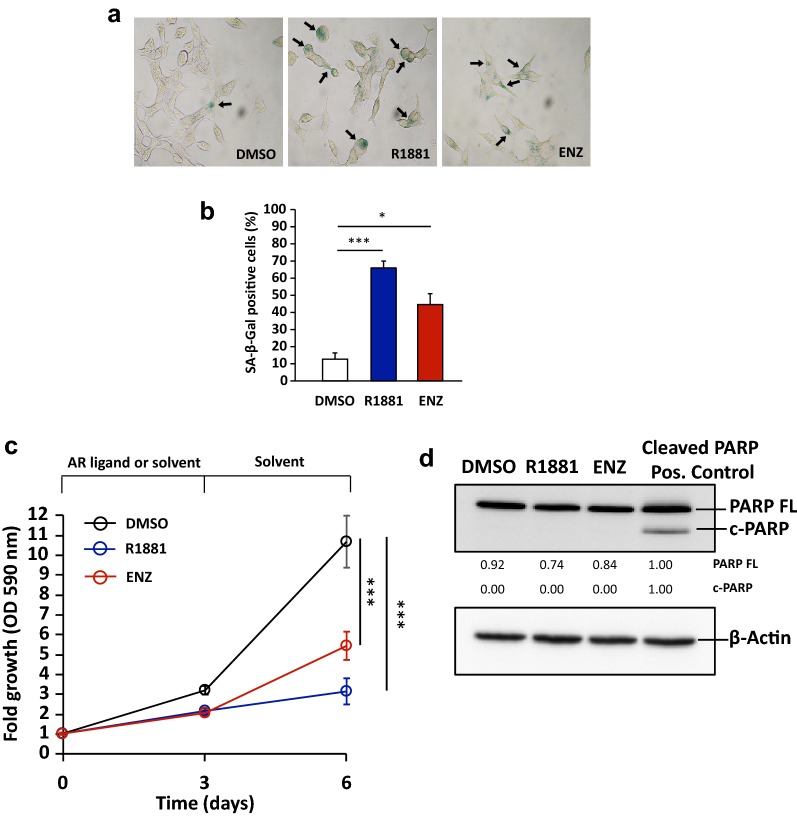Fig. 1.
AR agonist and antagonist induce cellular senescence and suppress PCa LNCaP cell growth. LNCaP cells were treated for 72 h with 1 nM R1881 (agonist), 10 μM ENZ (antagonist), or 0.1% DMSO as solvent control. After that, the AR ligands were removed. Fresh medium with 0.1% DMSO was added and further incubated for additional 72 h. a Representative pictures of SA-β-Gal staining under light microscope. Arrows indicate SA-β-Gal positive stained cells. b Percentage of SA-β-Gal positive stained cells at 72 h of AR ligand treatment. Bar graphs are shown as mean ± SEM (n = 3). c Growth curves of LNCaP cells with indicated treatments and time points analysed by crystal violet staining and OD 590 nm measurement. Values obtained from day 0 were set arbitrarily as 1. Line graphs are shown as mean ± standard deviation (n = 5). d The protein extraction was performed after 72 h of AR ligand treatment. To detect cleaved PARP (c-PARP), protein extracted from LNCaP cells treated with 1 μM Akt inhibitor (MK2206) was loaded as positive control. Full-length PARP (PARP FL) and c-PARP were detected by Western blotting and normalized to β-Actin levels served as loading control. Upper and lower numbers indicate normalized PARP FL and c-PARP band intensities relative to positive control

